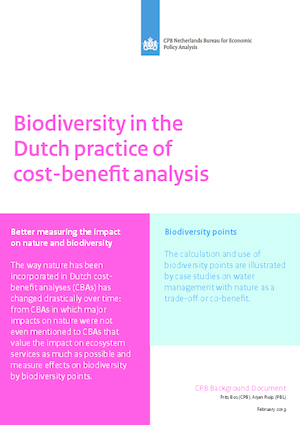Biodiversity in the Dutch practice of cost-benefit analysis
The way nature has been incorporated in Dutch CBA has changed drastically over time: from CBAs in which major impacts on nature were not even mentioned to CBAs that value the impact on ecosystem services as much as possible and measure effects on biodiversity by biodiversity points. The calculation and use of biodiversity points are illustrated by five case studies on water management with nature as a trade-off or co-benefit. These examples show that the applicability of biodiversity points differs per type of nature. It is more difficult for water quality related biodiversity than for land biodiversity, as the impact area is larger and the impacts are more difficult to define. The usefulness of biodiversity points in CBA can be advanced by providing overviews of their costs per point at various locations and for various habitats. This provides insights into the cost-effectiveness of alternative compensation or protection measures. Also the willingness to pay for such points can be investigated and may then later incorporated in future CBAs.
Downloads
Authors

